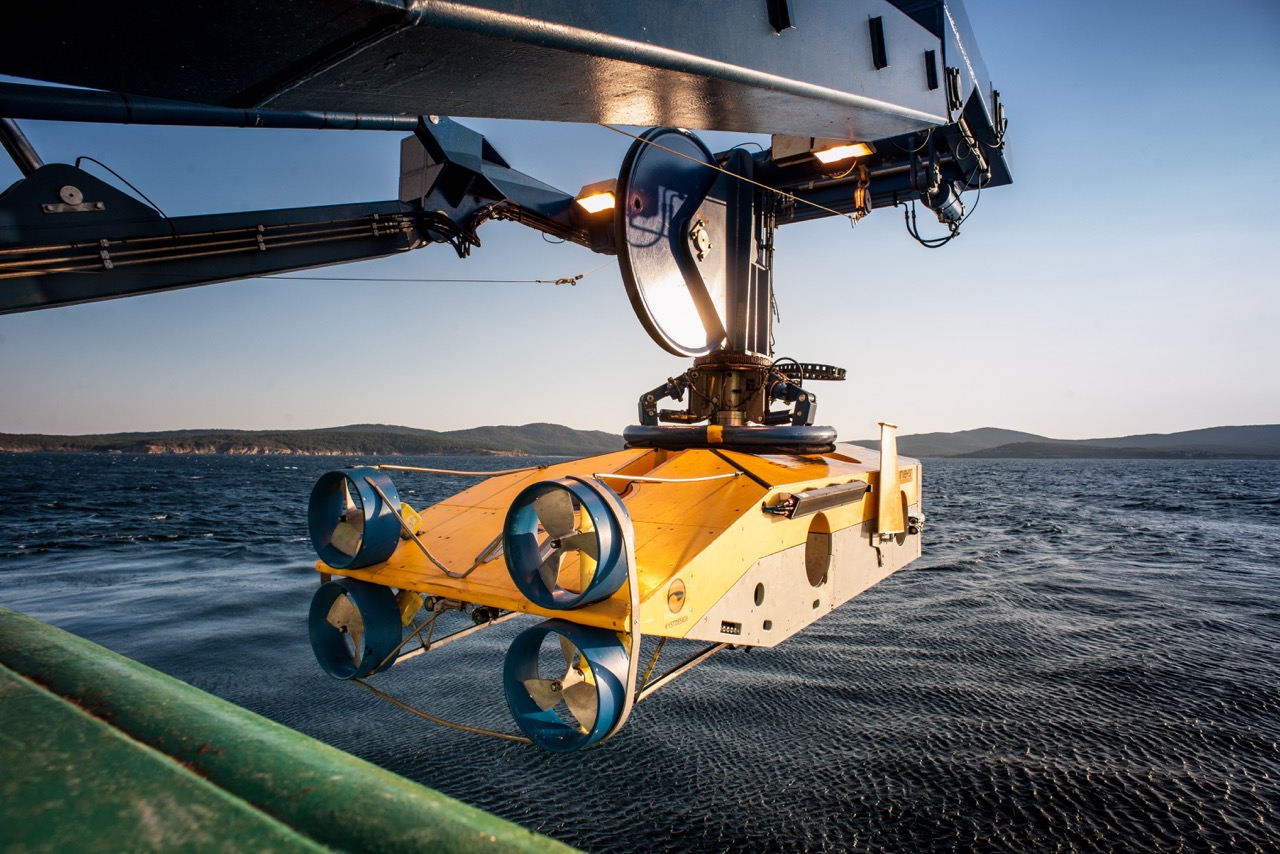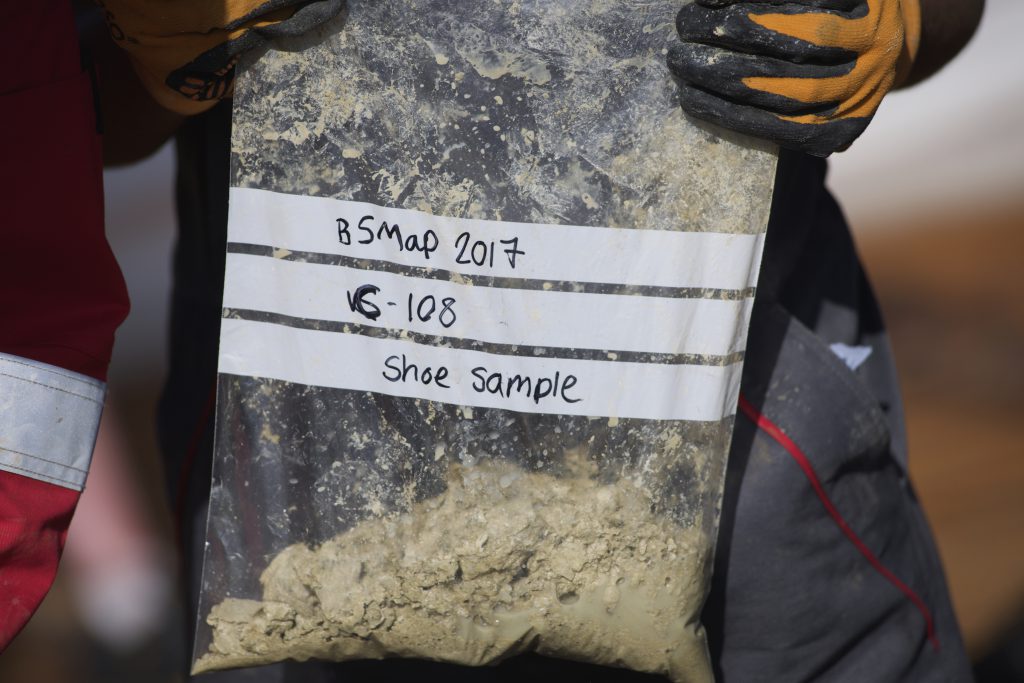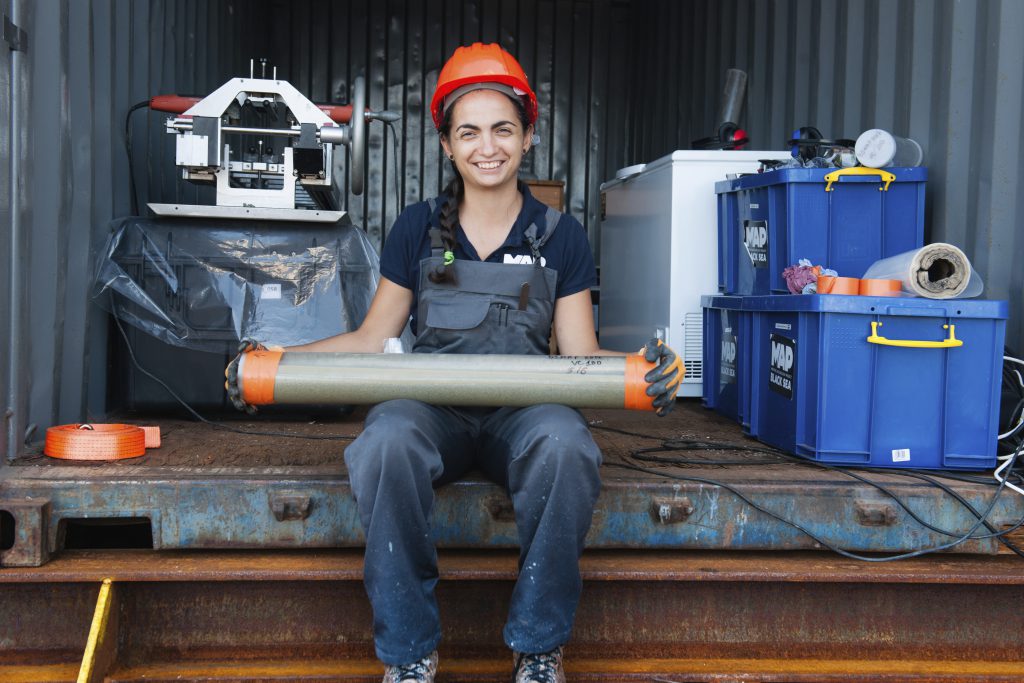It was well past midnight when I watched the beautiful 7,000,000 pound robot affectionately known as ‘Surveyor’, descend into the ink-black waters of the deep void of the mysterious Black Sea. On a mission like this, it is impossible not to be infected by this enthusiasm for life and exploration, so much so everyone on the ship struggled to go to sleep for fear of missing something on the next 12-hour watch.
With its penetrating lights disappearing beneath, I thought: “How did I get to be here?” A boy from sleepy and damp Rochdale, England, the Black Sea was only a name on a map, a place only of myth and daydreams, not somewhere anyone could actually go, nonetheless immerse yourself in a world of shipwrecks, robots, and piece together undiscovered worlds.
Fast forward a handful of decades and there I was on my knees, my Nikon in my hand, on the deck of the Stril Explorer photographing mud that had just been brought up to the surface for the first time since it fell onto the seabed, thousands upon tens of thousands of years of ago. This is beautifully preserved mud with powerful mind-expanding stories. Stories that will deepen our understanding of prehistoric history revealing stories of humankind. To be invited onto this project two years in a row is one of the most incredible experiences I’ve ever had with my camera.
I was joining scientists, archaeologists, and educators on the Stril, an astounding research vessel capable of navigating to within 30CM of a GPS position and then staying there without an anchor no matter what the surface conditions. That is hard to wrap your head around. Through the use of sonar and ROVs (remotely operated vehicles) we were able to discover ancient shipwrecks lying on the seabed, some almost as old as the Romans. They are incredibly well preserved because at the bottom of the Black Sea there is an “anoxic” layer where there is no oxygen, so bacteria cannot reproduce and destroy organic materials such as the wood of shipwrecks.
This collective of scientists and marine archaeologists, genuine marine explorers, were gathering data to uncover a stronger understanding of the greatest stories on earth: how human civilisation in this region came to be. Everyone but everyone on the ship had a real sense of purpose and the feeling of togetherness, out on a voyage of discovery as a team, was huge. The captain, lead scientists, ship cook, cleaners–every single person on the ship were fuelled by excitement and the ever-present feeling of adventure and discovery lurking below.
On a mission like this, it is impossible not to be ‘infected’ by this enthusiasm for life and exploration, so much so everyone on the ship struggled to go to sleep for fear of missing something on the next 12-hour watch..
One of the reasons these Bulgarian waters are such a treasure trove of information is that what remains underwater remains well preserved. From locating shipwrecks and gaining an understanding of ancient trade routes to sharing to connecting with schools to get a grasp of emerging technology and exploration through The Black Sea MAP STEAM (Science, Technology, Engineering, Maths) the project also engaged future marine explorers.
Standing on the deck, documenting one of the largest multidisciplinary maritime archaeology projects ever attempted was a complete honour. While the Black Sea has intrigued me in all its mystery as a little boy, this experience revealed she has more secrets than I ever knew possible.
Dive deeper into documenting the Black Sea M.A.P (Maritime Archaeology Project) in the Vault.








